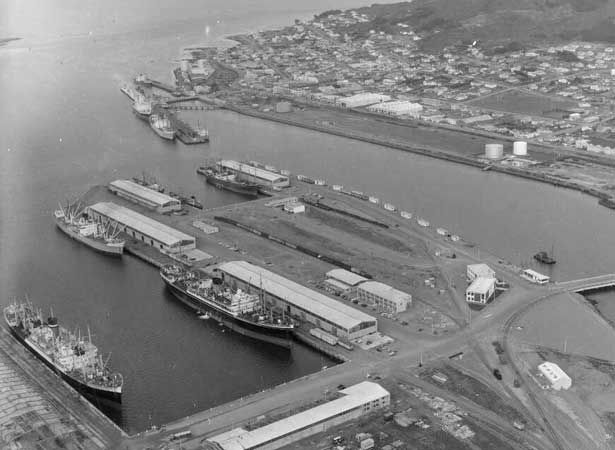
The 40-ha man-made Island Harbour, which took eight years to construct, is the centrepiece of the modern port facilities at Bluff, New Zealand’s southernmost commercial deepwater port.
The port of Bluff, nestled beneath 265-m Motupōhue (Bluff Hill), claims to be the oldest continuously occupied European settlement in New Zealand. European whalers and sealers may have visited the area in the 1790s. When a Sydney vessel, the Perseverance, entered the harbour in 1813 the crew found a Ngāi Tahu settlement on the seaward side of Motupōhue. Other flax traders, whalers and sealers visited over the following decade. Whaler James Spencer became the first permanent European resident of Bluff after arriving in 1823 and returning the following year to establish a trading post to supply visiting ships. A shore whaling station was established in 1836.
Construction of the Town Wharf began in 1863 and within four years Bluff (or Campbelltown, as it was officially known until 1917) was linked to Invercargill by one of New Zealand’s earliest railway lines. By the end of the century it was a thriving export port for dairy products and frozen meat. In 1952 a major expansion of port facilities began when it was decided to reclaim an area of shallow sandbanks and build what is now the Island Harbour. This man-made island was officially opened on 3 December 1960. Reclamation continued until 1982, when the No. 8 berth was completed.
Facilities on the Island Harbour include grain silos, extensive cool stores, a loader for wood chips and other bulk cargoes, tallow storage facilities, and New Zealand’s largest ship-lift (with a capacity of more than 1000 tonnes). The eastern side of the harbour is dominated by the giant Tīwai Point aluminium smelter, opened in 1971, which produces more than a quarter of a million tonnes of aluminium each year.
Today, the port of Bluff is operated by South Port New Zealand Ltd and has an annual cargo throughput of around 1.7 million tonnes. Imports include alumina and other raw materials for the smelter, petroleum products, fertiliser and paper pulp. Major export products include aluminium, meat, wool, tallow, forest products (ranging from logs to furniture), fish and grain.
Read more on NZHistory
External links
How to cite this page
'Bluff Island Harbour opened', URL: https://nzhistory.govt.nz/page/bluff-island-harbour-opened, (Ministry for Culture and Heritage), updated 3-Dec-2021
